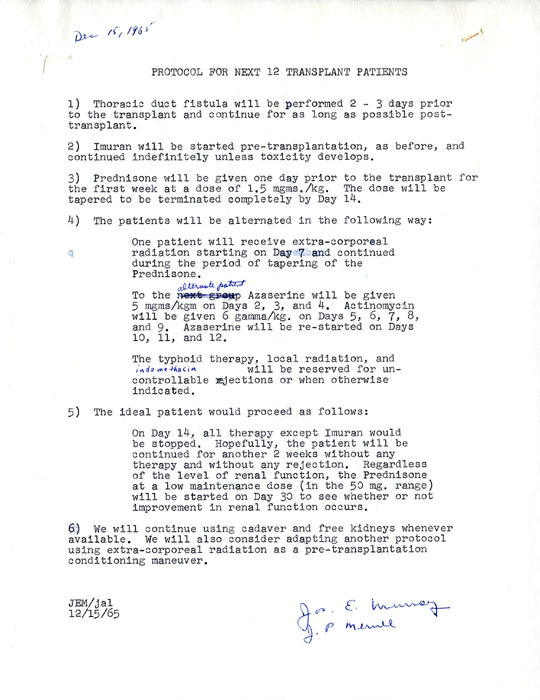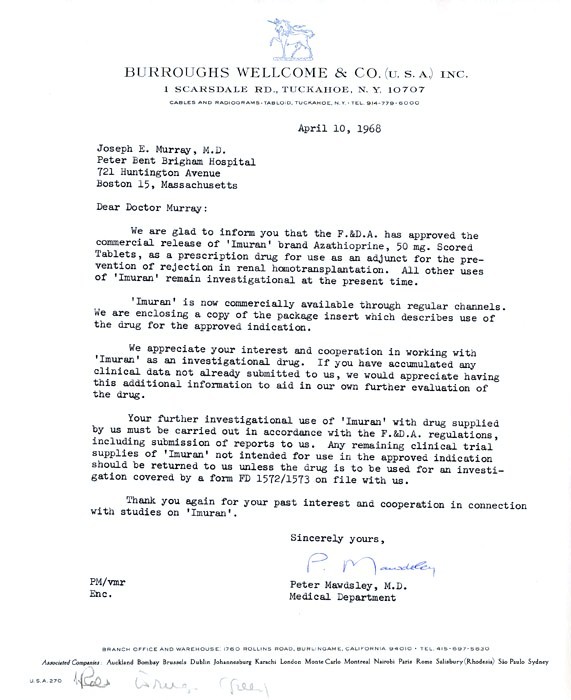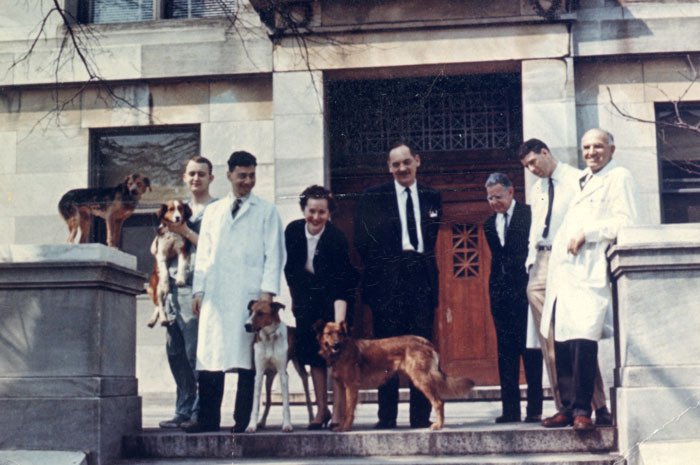Immunosuppression
Despite their successes with transplantation in twins, Murray and his colleagues were intially unable to supress a recipient's immune system sufficiently so that it would not reject a kidney from a non-twin or a cadaver. Attempts at utilizing total-body irradiation to achieve immune suppression largely failed. In 1959, doctors at Tufts Medical Center published a paper on the immunosupressive effects of an anticancer drug, 6-MP. This drug had been developed by George Hitchings and Gertrude Elion at Burroughs Wellcome in New York.
.
In London, Dr. Roy Calne had been using the drug for canine kidney transplants, with encouraging results. Calne came to Boston as a Research Fellow in the Surgical Research Laboratory, where he and Murray continued to work with Hitchings and Elion. They ultimately settled on a derivative of 6-MP called azathioprine (Imuran).
On April 5, 1962, the first successful cadaveric transplantation was performed on a 23 year-old accountant named Mel Doucette. Murray and John Merrill disagreed about the correct protocol for administering the Imuran. Merrill preferred higher doses along with small doses of whole body irradiation, while Murray sought to keep the doses of Imuran small. They utlimately decided to follow Murray's recommendations.
The successful transplantation of an organ from a deceased donor revolutionized transplantation. 16,812 kidney transplants took place in the United States in 2012, 11,043 of which came from cadaveric donors.




